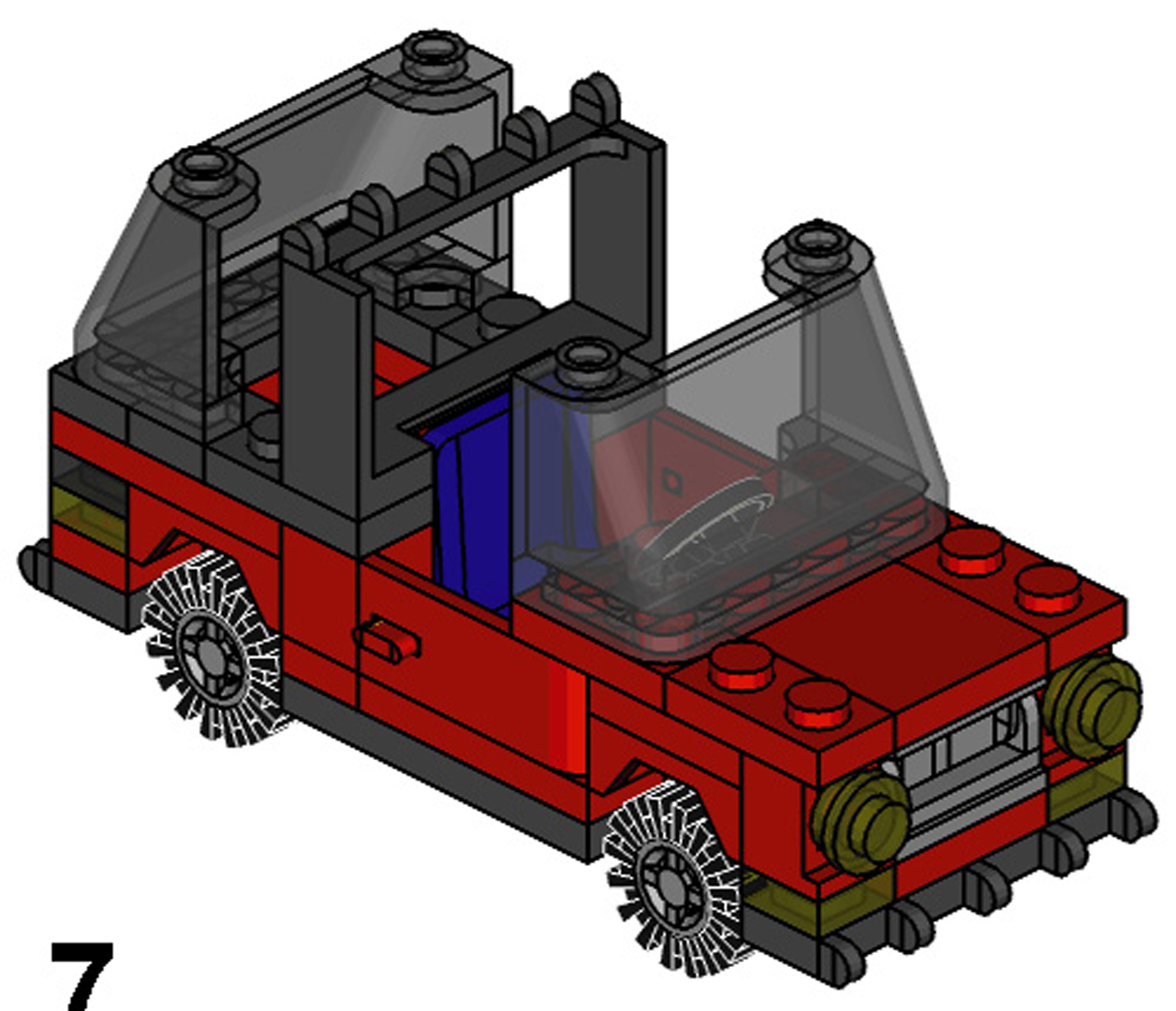“Designing effective step-by-step assembly instructions” by Agrawala, Phan, Heiser, Haymaker, Klingner, et al. …
Conference:
Type(s):
Title:
- Designing effective step-by-step assembly instructions
Presenter(s)/Author(s):
Abstract:
We present design principles for creating effective assembly instructions and a system that is based on these principles. The principles are drawn from cognitive psychology research which investigated people’s conceptual models of assembly and effective methods to visually communicate assembly information. Our system is inspired by earlier work in robotics on assembly planning and in visualization on automated presentation design. Although other systems have considered presentation and planning independently, we believe it is necessary to address the two problems simultaneously in order to create effective assembly instructions. We describe the algorithmic techniques used to produce assembly instructions given object geometry, orientation, and optional grouping and ordering constraints on the object’s parts. Our results demonstrate that it is possible to produce aesthetically pleasing and easy to follow instructions for many everyday objects.
References:
1. 80/20 INC. 2003. www.8020.net.Google Scholar
2. BLANZ, V., TARR, M. J., AND BÜLTHOFF, H. H. 1999. What object attributes determine canonical views. Perception 28, 575–600.Google ScholarCross Ref
3. BUTZ, A. 1997. Anymation with CATHI. In Proceedings of AAAI/IAAI ’97 in Providence / Rhode island, AAAI Press, 957–962. Google Scholar
4. DE MELLO, L. S. H., AND SANDERSON, A. C. 1991. A correct and complete algorithm for the generation of mechanical assembly sequences. IEEE Transactions on Robotics and Automation 7, 2, 228–240.Google ScholarCross Ref
5. DRISKILL, E., AND COHEN, E. 1995. Interactive design, analysis and illustration of assemblies. In 1995 Symposium on Interactive 3D Graphics, ACM Press, 27–33. Google Scholar
6. FEINER, S. 1985. APEX An experiment in the automated creation of pictorial explanations. IEEE Computer Graphics and Applications 5, 11, 29–37.Google ScholarDigital Library
7. GUIBAS, L. J., HALPERIN, D., HIRUKAWA, H., LATOMBE, J.-C., AND WILSON, R. H. 1995. A simple and efficient procedure for polyhedral assembly partitioning under infinitesimal motions. In IEEE International Conference on Robotics and Automation, IEEE, 2553–2560.Google Scholar
8. HEISER, J., AND TVERSKY, B. 2002. How to put things together. In Poster presentation at the meeting of the Psychonomics Society, Psychonomics Society.Google Scholar
9. LIN, M. C., AND CANNY, J. F. 1991. A fast algorithm for incremental distance calculation. In IEEE Intern. Conf. on Robotics and Automation, IEEE, 1008–1014.Google Scholar
10. MACKINLAY, J. 1986. Automating the design of graphical presentations of relational information. ACM Transactions on Graphics 5, 2, 110–141. Google ScholarDigital Library
11. MARTIN, J. 1989. High Tech Illustration. North Light Books.Google Scholar
12. MIJKSENAAR, P., AND WESTENDORP, P. 1999. Open Here: The Art of Instructional Design. Joost Elffers Books, New York.Google Scholar
13. NOVICK, L. R., AND MORSE, D. L. 2000. Folding a fish, making a mushroom: The role of diagrams in executing assembly procedures. Memory & Cognition 28, 1242–1256.Google ScholarCross Ref
14. PALMER, S., ROSCH, E., AND CHASE, P. 1981. Canonical perspective and the perception of objects. In Attention and Performance IX, 135–151.Google Scholar
15. QUINLAN, S. 1994. Efficient distance computation between non-convex objects. In IEEE Intern. Conf. on Robotics and Automation, IEEE, 3324–3329.Google Scholar
16. RAAB, A., AND RÜGER, M. 1996. 3D-ZOOM interactive visualization of structures and relations in complex graphics. In 3D Image Analysis and Synthesis, 87–93.Google Scholar
17. RIST, T., KRÜGER, A., SCHNEIDER, G., AND ZIMMERMAN, D. 1994. AWI A workbench for semi-automated illustration design. In Proc. of Advanced Visual Interfaces, 59–68. Google Scholar
18. ROMNEY, B., GODARD, C., GOLDWASSER, M., AND RAMKUMAR, G. 1995. An efficient system for geometric assembly sequence generation. Proc. ASME International Computers in Engineering Conference, 699–712.Google Scholar
19. SELIGMANN, D. D., AND FEINER, S. 1991. Automated generation of intent-based 3D illustrations. In Proceedings of SIGGRAPH 91, 123–132. Google ScholarDigital Library
20. STROTHOTTE, T. 1998. Computational Visualization, Graphics, Abstraction and Interactivity. Springer, ch. 13, 215–240. Google Scholar
21. TVERSKY, B., AND HEMENWAY, K. 1984. Objects, parts and categories. Journal of Experimental Psychology: General 113, 169–193.Google ScholarCross Ref
22. TVERSKY, B., AGRAWALA, M., HEISER, J., LEE, P., HANRAHAN, P., STOLTE, C., AND DANIEL, M.-P. Submitted. Cognitive design principles for automated generation of visualizations.Google Scholar
23. WILSON, R. H. 1992. On Geometric Assembly Planning. PhD thesis, Stanford University. Google Scholar
24. WOLTER, J. D. 1989. On the automatic generation of assembly plans. In Proc. IEEE International Conference on Robotics and Automation, 62–68.Google Scholar
25. ZACKS, J., TVERSKY, B., AND IYER, G. 2001. Perceiving, remembering and communicating structure in events. Journal of Experimental Psychology: General 136, 29–58.Google ScholarCross Ref




